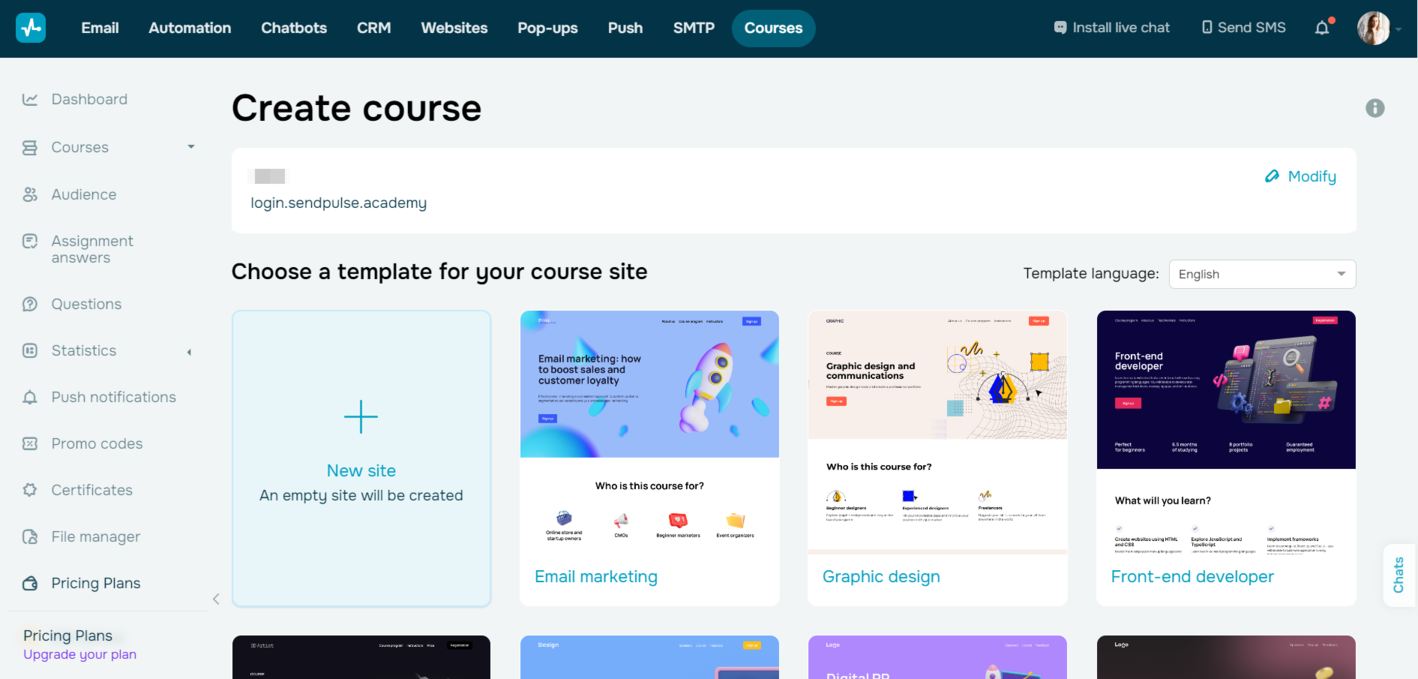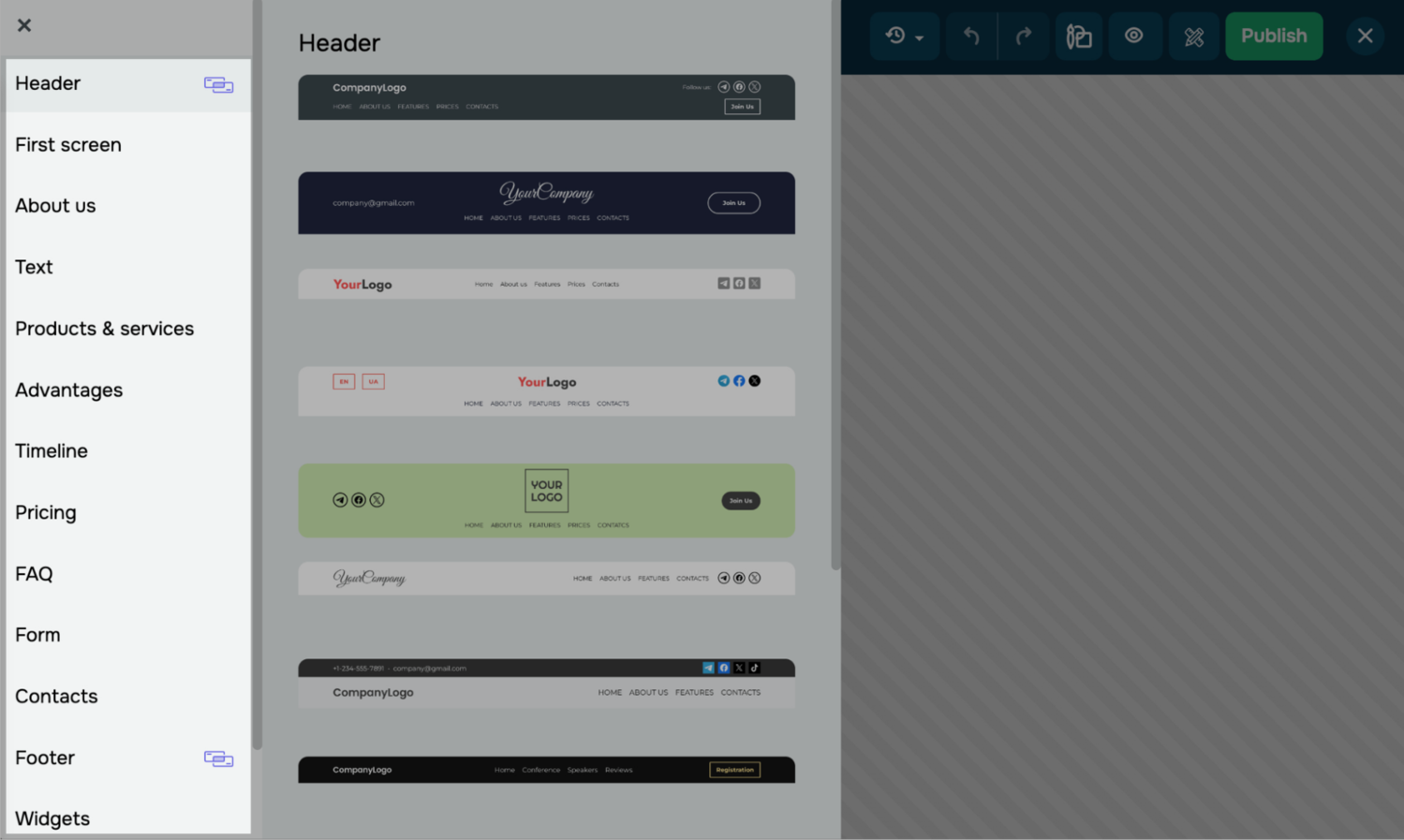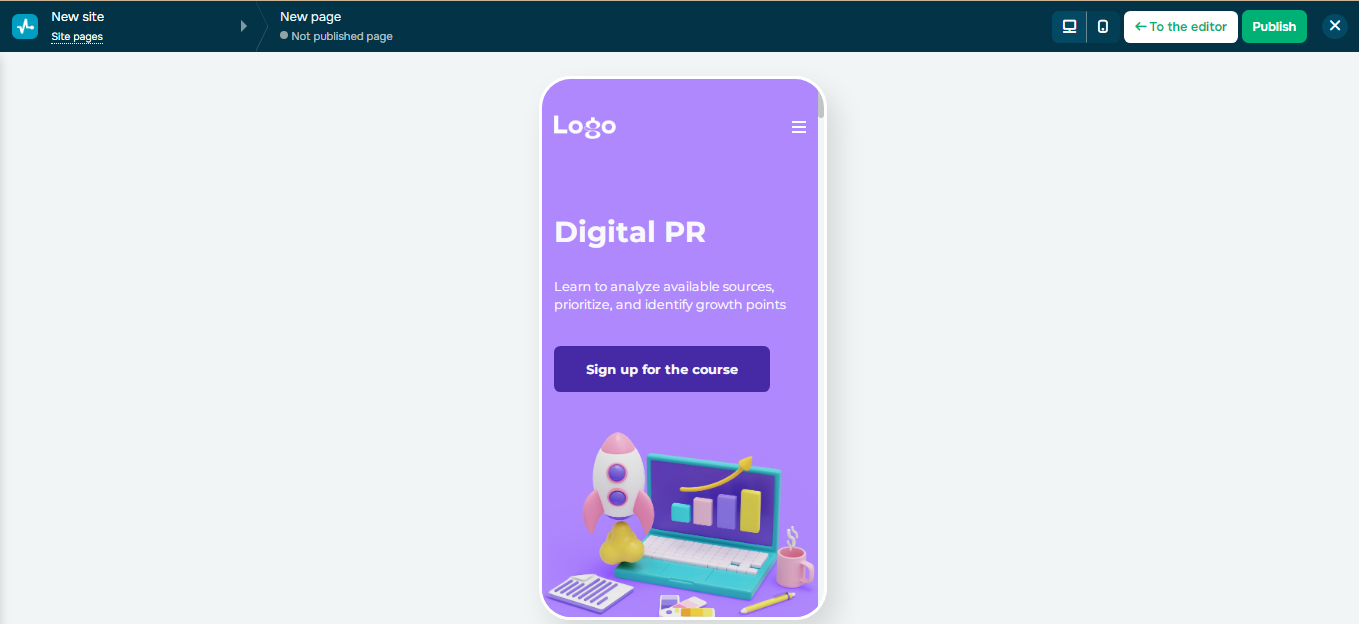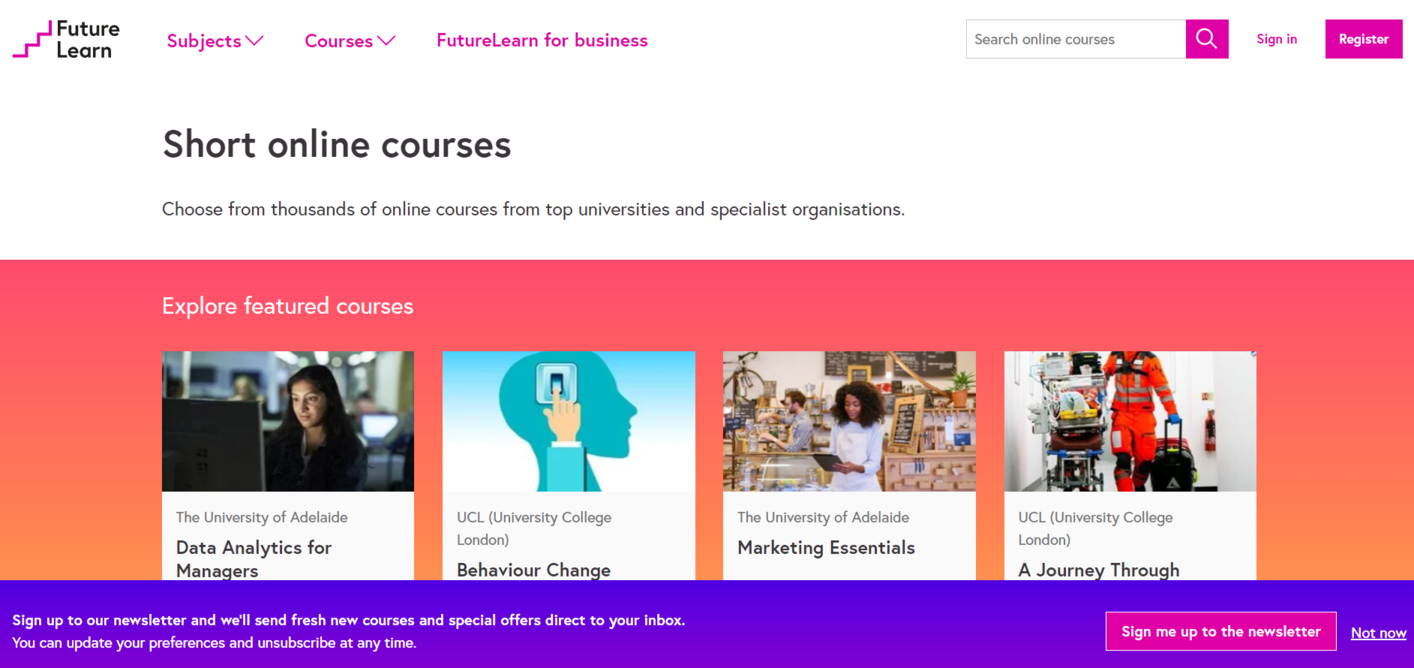These days, nearly every brick-and-mortar business maintains an online presence, whether in entertainment, sports, or healthcare. If your company isn’t online, does it truly exist?
The digital era opens up great opportunities not just for retail but also for education. If you’re an expert in a particular field, there is an excellent way to monetize your knowledge: creating and selling courses online. According to statistics, 46% of students prefer online learning, or at least some portion of it.
In this post, we’ll show you where and how to sell courses online, along with tips to maximize your efficiency.
Content:
Is it worth selling courses online?
According to Radix, the projected value of the global eLearning industry is expected to reach $350 billion by 2025. So, is selling courses online profitable? Yes, it surely can be.
Besides, conducting any type of course, corporate training program, or coaching session online offers numerous advantages:
- Students can study from anywhere in the world. Selling courses online allows companies to reach a global audience without being restricted by geographical boundaries, which expands their market potential significantly.
- Clients have the flexibility to choose a convenient learning pace and schedule. Students can study from home or while traveling, fitting learning around work and family commitments. It boosts enrollment and revenue by accommodating diverse schedules and enhances customer retention and satisfaction.
- Businesses do not require a physical location. This allows companies to slash overhead costs like rent, utilities, maintenance, and property taxes. These savings can then be reinvested into improving course content, enhancing platform features, or boosting marketing efforts.
- Companies can automate a wide variety of workflows. Automated systems can handle student enrollment, course delivery, knowledge assessments, and basic customer support, significantly reducing the administrative workload on employees. This, in turn, allows businesses to focus on speeding up customer service response time and improving the quality of their offerings.
- The learning process becomes more interactive. Online platforms let educators incorporate multimedia elements such as videos, animations, quizzes, polls, and interactive simulations into course materials to make them more engaging.
However, to deliver high-quality eLearning experiences, you’ll need tools for creating videos and images, conducting online meetings, reviewing homework, tracking student progress, and marketing your courses.
Where can you sell courses online?
If you’ve already decided to sell courses online, you need to determine the best platform and approach. Below are the three most popular options.
Self-hosted online course website
If you have your own website, selling your online course directly from it can be a great option. While this route might be more costly in terms of both money and manpower — since you’ll likely need to hire developers to bring your vision to life — it comes with some significant perks. You will not be confined by the limitations of third-party tools, and you’ll keep all your earnings without having to split them with a platform.
Take YesChef, for instance. They host their own online platform where they offer cooking classes by renowned chefs from around the world.

Online course platforms
Online course platforms come with all the necessary tools to create and manage all types of eLearning programs, track performance, process payments, and handle multi-channel marketing and customer communications, all in one place. Their simplicity is their biggest advantage, allowing even beginners to create and promote courses effortlessly.
Take SendPulse, for example. Using the platform’s intuitive builder, you can develop cohesive, high-quality online courses, as well as a stunning website and landing page to showcase your expertise to your target audience. It allows you to combine email campaigns, SMS, chatbots, live chats, pop-ups, and web push notifications, into effective, automated flows to nurture your leads at every stage of their buyer journey. Using SendPulse, you can effortlessly gather prospects’ contacts, leverage segmentation to engage them with personalized messages, accept payments through your website or chatbots, conveniently manage all student data from a built-in CRM, and make your eLearning business run like a well-oiled machine.

Course marketplaces
As the name suggests, these platforms are dedicated to selling a variety of online courses across different fields. Typically, such platforms not only provide robust tools for creating and selling your courses online but also let you reach your target audience more quickly and effortlessly. By listing your course on a marketplace, you can tap into the platform’s built-in audience looking for courses like yours. However, this convenience comes at a cost — you’ll typically need to subscribe to a pricing plan or share a portion of your income with the platform.
A prime example is Udemy, an online learning platform where instructors from around the globe create and sell courses on countless subjects, making them accessible to students worldwide.

6 steps to sell courses online
Now that you know where courses are sold online, let’s take a step-by-step guide on what to do next.
Choose a niche for your course and research the market
For your idea to be successful and generate revenue, you need to clearly define your target audience and understand their motivations. This audience might include individuals looking to learn a new profession, acquire additional skills for career advancement, continue academic studies, develop new skills for personal growth, or pursue hobbies and personal interests. Understanding who your course is for and why they need it is extremely helpful for tailoring your marketing and content strategy effectively.
Thoroughly researching the market is just as important. You must learn how competitive the market is, what your competitors have to offer, their strengths and weaknesses, and, most importantly, what unique value you can bring to the table.
Develop a course with a clear structure, tangible objectives, and goals
Start by outlining the course content in a logical sequence, breaking it into manageable modules. Begin with an introductory module that provides an overview of the course and its importance. Clearly define specific, measurable learning objectives for each module and communicate these to students at the start, so they understand what they are expected to learn and achieve. Introduce the creators, highlight the experts involved, and share success stories.
Create a catchy name for your online course
The title is the first thing your potential clients will see, so making your online course name catchy is crucial. It should clearly convey what your course is about without misleading anyone, and ideally, remain clear and concise.
One of the best practices is to highlight your course’s benefits right in the title. Instead of a generic name like “Fascinating course on email marketing,” try something more specific and enticing, such as “Email marketing for beginners: start selling with emails.” But of course, a great title should always be backed by high-quality content.
Additionally, researching keywords that people use to search for courses on your topic can help improve your website’s and course’s visibility. Tools like Google Keyword Planner or Ahrefs can be very useful for this. By choosing the right keywords, you can make your course easier to find and attract more students.
Choose a platform for selling your course online
Choose the most convenient one for you, considering your experience, financial capabilities, and further scaling plans. For beginners, a marketplace is the best option — you just need to create a high-quality course and list it on the platform to attract your first interested students.
If you plan to expand your courses and actively market them, consider using comprehensive course builder platforms. They usually allow you to create, host, market, and monetize your course from a single tab, and as your business grows, upgrade to a higher-tier subscription plan to accommodate a larger audience.
Think about the payment structure of your course
When it comes to your course’s payment structure, there are many factors to consider.
For instance, offering a demo version or a free trial might be a beneficial option. This would allow your potential students to get a glimpse into your course content and quality and decide if it’s the right fit before committing to a purchase.
Also, you will need to figure out your course monetization model. Will it be a subscription service or a one-time purchase? Would you like to offer different pricing plans with basic and premium access levels? And, perhaps, an enterprise plan to meet the needs of larger organizations? To find the right balance for your pricing structure, it’s always beneficial to research your competitors. Make sure to understand their pricing models and identify what works best for similar courses.
Create a marketing strategy to promote your product
Even if you offer the highest quality course on the market, it will not matter if your target audience doesn’t know about it. To get actual customers, you need a detailed sales funnel with high-quality, personalized communication at each stage.
Informing potential customers about what you offer, retaining existing clients, and attracting new ones are the essential parts of an effective online course promotion strategy. One way to do this is by using direct marketing channels with tailored messages for each stage of the user’s journey. For instance, your initial messages might focus on awareness and interest, while later communications could highlight benefits and prompt action.
Additionally, using lead magnets, like free resources, trials, and limited-time promotional offers can be extremely effective. These tactics not only attract potential customers but also encourage them to take the next step in your sales funnel.
Tips for successfully selling courses online
If you have developed a high-quality course, this is already half the battle. The next step is to focus on your marketing efforts. Let’s take a closer look at some effective techniques that will help you win over your audience and increase profits.
Create a selling website or landing page
Your course landing page or website should feature all the key details about your course. Include information on your course structure and schedule, the experts who developed it, the benefits students will gain from it, and your terms and conditions. Make sure to specify its price and available payment options as well. And, most importantly, provide clear instructions on how your students can enroll.
Highlighting positive reviews from your students, success stories from your graduates, or endorsements from industry experts can add more credibility to your brand and attract more students.
This is how Tring Studio designed a landing page for its course:

It’s essential that all this information is well-organized, easy to find, and presented on a user-friendly website. Fortunately, you don’t need to be a web designer or developer to create an effective landing page.
SendPulse offers a powerful website and landing page builder that makes the process as easy as it gets. With its intuitive drag-and-drop interface, you can easily add, resize, and customize elements to match your vision. You can choose from ready-made templates or effortlessly create your own design from scratch.

You will also have access to various payment methods, course review and enrollment widgets, subscription and registration forms, FAQ sections, multi-channel marketing tools, and much more.
Optimize your website
If you’ve already created an expert course and an appealing, user-friendly website, it’s time to focus on SEO optimization. Start by researching keywords to understand what phrases your potential customers type into the search engine when looking for online courses. This will give you valuable insights into their needs and help you optimize your content accordingly. Incorporate these keywords into your headings and texts to improve your site’s visibility in organic search results.
Website performance is also crucial — it affects speed, responsiveness, and overall user experience. Not only does a fast, smooth website keep users happy, but search engines also use page speed and user experience as ranking factors. Speaking of which, don’t forget to give extra attention to mobile users. Since 63% of all online traffic comes from smartphones or tablets, your website should be adaptive to any device.
If you build your website or landing page with SendPulse, it will be responsive from the start, displaying well on both desktops and mobile devices.

Additionally, you can use built-in AI tools to create, refine, translate and optimize your website content with ease.
Use direct channels
Direct marketing channels are a great way to communicate with potential and existing customers. They help companies build stronger relationships with clients, gain immediate feedback, and maintain control over the branding and customer experience. In fact, 58% of consumers appreciate and trust personalized offers delivered through direct campaigns.
Some of the most popular direct marketing channels include:
- email campaigns;
- web push notifications;
- mobile push notifications;
- social media;
- SMS;
- chatbots.
To start communicating with users through direct channels, you will first need to obtain their contact information. Implementing subscription forms on your website is a great way to collect these data points, allowing you to keep in touch and nurture your leads into paying customers. Such a setup also enables you to create efficient automated workflows.

It’s crucial that your direct communications address your customers at different stages of their lifecycle. For example, you can send promotional offers to new subscribers, provide course progress updates to your existing customers, and send personalized emails to cross-sell and upsell.
However, as you communicate with customers across multiple marketing channels, you will accumulate a substantial amount of data on their behavior and preferences. This brings us to our next important tip for successfully selling courses online.
Implement a CRM system
To work more effectively with customer data and boost customer retention, implementing a CRM system is a smart move. Such tools can help you automate your sales process and streamline customer communications, which can improve user experience and increase your company’s revenue.
When you accumulate a lot of customer data, like contacts and sales records, managing it across various platforms can become cumbersome and slow down your company’s growth. A high-quality CRM system eliminates this problem by offering robust sales, marketing, and reporting tools, allowing you to keep all customer data organized and readily available.
Add a live chat to your website
Did you know that between 70% and 96% of visitors who leave your website may never come back? Just imagine the potential profit if you could convert even a fraction of these visitors into customers. To achieve this, you need to understand why they’re leaving your website and eliminate those reasons. A great option is to add a live chat to your website to promptly answer your prospects’ questions, address their concerns, or help them with course selection.
Additionally, you can create chatbots for popular messaging apps or social media platforms. Such chatbots offer numerous advantages: they help businesses automate routine workflows, reduce employee workload, and assist customers even outside of business hours.
With SendPulse, you can seamlessly integrate a chatbot across your website and popular messaging platforms like Telegram, WhatsApp, Instagram, and Facebook. You can set up automated flows so that messages are triggered and CRM deals are generated by specific customer actions. Plus, by connecting SendPulse with ChatGPT, you can ensure your subscribers get the support they need whenever they need it.

Conclusion
Now that you have a step-by-step guide on how to sell courses online, let’s recap the key options: building your own website, using a course builder, or tapping into course marketplaces.
To make your course sales process effective and profitable, you’ll need to research the market, your competitors, and your target audience, develop a detailed sales funnel, leverage multi-channel marketing communications, and streamline your workflows with marketing automation tools and a CRM system.
SendPulse offers everything you need to create, promote, and sell courses online — from designing a website or landing page to managing deals, engaging with customers, and analyzing data. Give our platform a try, and help your eLearning business thrive!





![How to Start an Online Course Business [2024 Guide]](https://www.spcdn.org/blog/wp-content/uploads/2024/09/course-business-cover-255x167.png)


